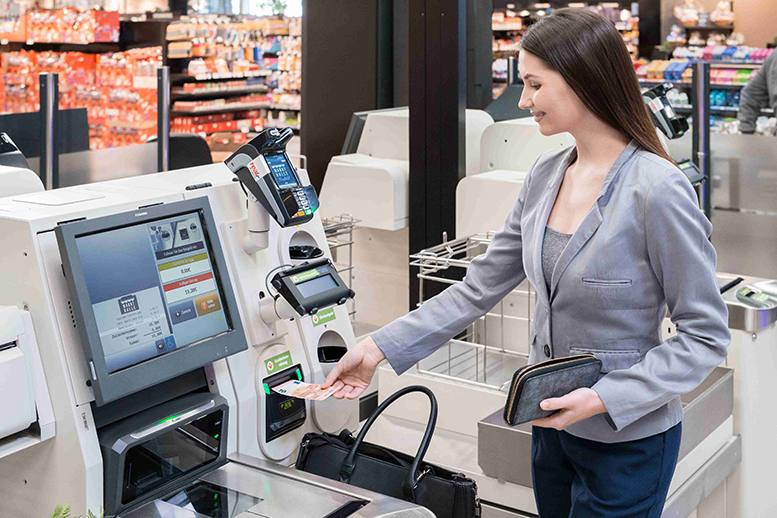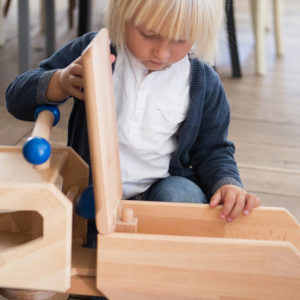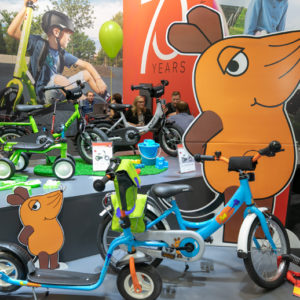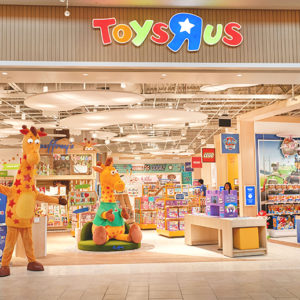Cash registers - self-service systems are becoming more and more popular with customers

Latest news

-ADVERTISEMENT- The wellness and fitness trend has arrived in the …

The fight against environmental destruction and the climate crisis are …

Anyone looking for new products in the field of toys, …

It is a market with huge dimensions and great potential. …

For companies, a social media presence has become indispensable and …

Research by TV station RBB has shown that some outlet …

The industry association Licensing International (formerly LIMA) has honored outstanding …

Communications manager Hannah König and managing director Stephan Schenk are …

The toy dealer wants to leave his insolvency behind him. …

A neuroscientific study conducted by the Goldmedia Research Institute on …
Hardly anything disturbs customers as much as waiting at the cash registers. As a recent study by the EHI Retail Institute shows, self-service checkouts are increasingly gaining acceptance.
Ikea has them, Decathlon too, supermarkets like Real, Kaufland, Edeka or Rewe anyway. We are talking about cash registers that are served by the customers themselves. These systems are finding their way into more and more stores. According to the trade research institute EHI, customers can currently carry out their own scanning and payment processes in almost 1,000 stores throughout Germany. Within two years, the number of stores with stationary self-checkout systems has increased by around 85 percent and with mobile self-scanning systems by as much as 130 percent. “The customer’s own scanning of its articles - stationary at the checkout or mobile at the shelf - is understood as additional customer service, primarily to shorten waiting times,” says Frank Horst, author of the market survey “Use of self-checkout systems and self-scanning systems in Germany”. Around two thirds of all stores with self-service checkouts can be found in food retailing. Although expensive for store operators, cash payment is possible in around 85 percent of stores. After all, many customers want to pay cash for smaller purchases in particular.
Four out of five consumers know cash registers with self-service function
But how do modern cash registers reach customers? EHI experts have investigated this in another study. They asked consumers about the use and acceptance of self-checkout systems. With the increasing number of checkout systems in stores, they have also become better known. Today, 78 percent of German consumers are familiar with self-service checkout systems. By 2015, it was just over 50 percent. With increasing availability, the use of these systems has also increased significantly. Around 32 million customers now use stationary or mobile self-service checkouts. Most users make their choice depending on the situation, for example on the basis of the queue situation at the other checkouts. In addition, if the number of articles is manageable, the faster procedure at the self-service checkout is often preferred. When hand scanners and scanner apps are used, the time saved and the fun of technical innovations play an important role.
Significant increase in users expected
The acceptance of the new funds is clearly a question of age. Younger people tend to have an affinity for this technology. A total of 66 percent of 14- to 29-year-olds use these systems. For 40 to 49-year-olds, this figure is 53 percent. In the over-60s age group, the proportion of users is declining significantly and is only twelve percent. The experts also asked non-users about their motives. The biggest obstacles are habits, a sense of social responsibility towards employees and a reduction in human interaction. However, this group of customers also knows that they will not be able to escape this technology in the long run. When asked whether they would use the cash registers if their number increased significantly, more than half of them answered yes. For this reason, the researchers forecast an increase in the total number of users by a further 15 percent in the coming years.
You might be also interested in:
Dynamic pricing - how German companies calculate their figures
Mobile payment on the advance in Germany
Bon obligation from 2020 - significance for retail and customers
Link: The EHI Retail Institute has investigated the use and acceptance of self-service checkout systems.
Image: real GmbH
//KH




Leave a Reply